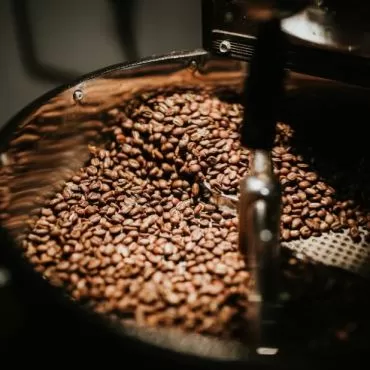
Who are the world's largest coffee producers?
Seventy countries around the world produce coffee. But not all of them also sell their coffee on world markets. Many countries see the production and sale of coffee beans as the top product of their economy and depend on the income from coffee sales. Fifty countries grow coffee on their own land and export it around the world. The positions of the largest coffee producers have remained the same for several years. Who are the world's coffee market leaders?
Coffee exports are increasing every year
The annual consumption of coffee is steadily increasing. Every year, coffee-growing countries export around 6 million tonnes of green coffee beans around the world, and this figure is still rising. However, only a few major producers supply most of the world's coffee markets. But competition between producers is high, especially in South America and Africa, often leading to coffee wars.
The top 10 coffee exporters include the following countries:
Brazil
It produces and exports roughly 2.6 million tonnes of coffee annually and with this production, it is the world's leading coffee commodity. The majority of coffee production is Arabica.
Vietnam
Surprisingly, the second position is occupied by Vietnam, which has only been on the world coffee markets for a few years. It exports about 1 million tonnes of coffee beans annually. Unlike Brazil, Vietnam primarily produces Robusta, and although political and economic factors affect coffee production, Vietnam has held onto second place for quite some time.
Colombia
One of the most delicious coffees in the world comes from Colombia. The farming areas located at different altitudes give Colombian coffee quite a range of flavours. Moreover, Colombia brings over 200 years of experience to its coffee. The country produces approximately 0.8 million tonnes of green beans each year.
Indonesia
Coffee from Indonesia can impress the world's biggest connoisseurs. Indonesian farmers have invented one of the most interesting methods of processing coffee. Kopi Luwak is one of the world's most expensive coffees and requires palm civets to produce it. The coffee cherries pass through their digestive tract and the farmers then harvest the beans themselves. Annually, Indonesia exports nearly 0.7 million tonnes of coffee.Ethiopia
It is the largest exporter of coffee among African countries. Ethiopia's economy is heavily influenced by trade in this commodity. The country exports 0.38 million tonnes of coffee beans annually.
Honduras
Ethiopia and Honduras have been competing with each other for the 5th place among the top coffee producers for several years. Current statistics indicate that Honduras exports 0.35 million tons of coffee annually. The higher altitude gives the coffee a better flavor, which indicates a definite competitive advantage. A special feature of Honduras is the farming families that have been in the coffee export business for several generations.
India
The most famous coffee-growing region in India is Karnataka. Nearly 70% of India's total production comes from here. Robusta predominates, but some farmers grow Arabica, which is in high demand around the world. India produces and exports 0.35 million tonnes of coffee annually.
Uganda
An interesting feature of Uganda is the farms that grow other crops in the field along with Arabica coffee. Uganda produces 0.29 million tonnes of coffee.
Mexico
Bio-coffee beans from small Mexican farms make up most of the local coffee production. It is the highest quality coffee. Arabica beans account for the largest share of the total amount of coffee beans produced in Mexico. Organic shade-growing and lower growing temperatures give it a unique flavour. Mexico sells 0.23 million tonnes of coffee annually on world markets.
Guatemala
Guatemala's annual coffee exports are around 0.2 million tonnes. Guatemala, specifically the Antigua region, makes the most of its volcanic soil and predictable weather. Its coffee beans are prized among experts. The vast majority of production is Arabica.
Other countries that enter the coffee commodity statistics sell under 0.2 million tonnes a year. By comparison, Zambia, a country at the very bottom of the charts, sells 120 tonnes of coffee beans a year.
Arabica or robusta or know the main differences
Each species is different. Arabica has a slightly sour taste and overall a greater range of flavours, from fruity to slightly woody. It contains less caffeine and more sugar and fat. But the main difference is the growing conditions. Arabica produces coffee cherries after 6 years and its cultivation requires a milder climate without temperature fluctuations. Robusta is harvested in as little as 3 years and the caffeine content is 3 times higher than Arabica. Both types of coffee will thus find their fans.


























































































